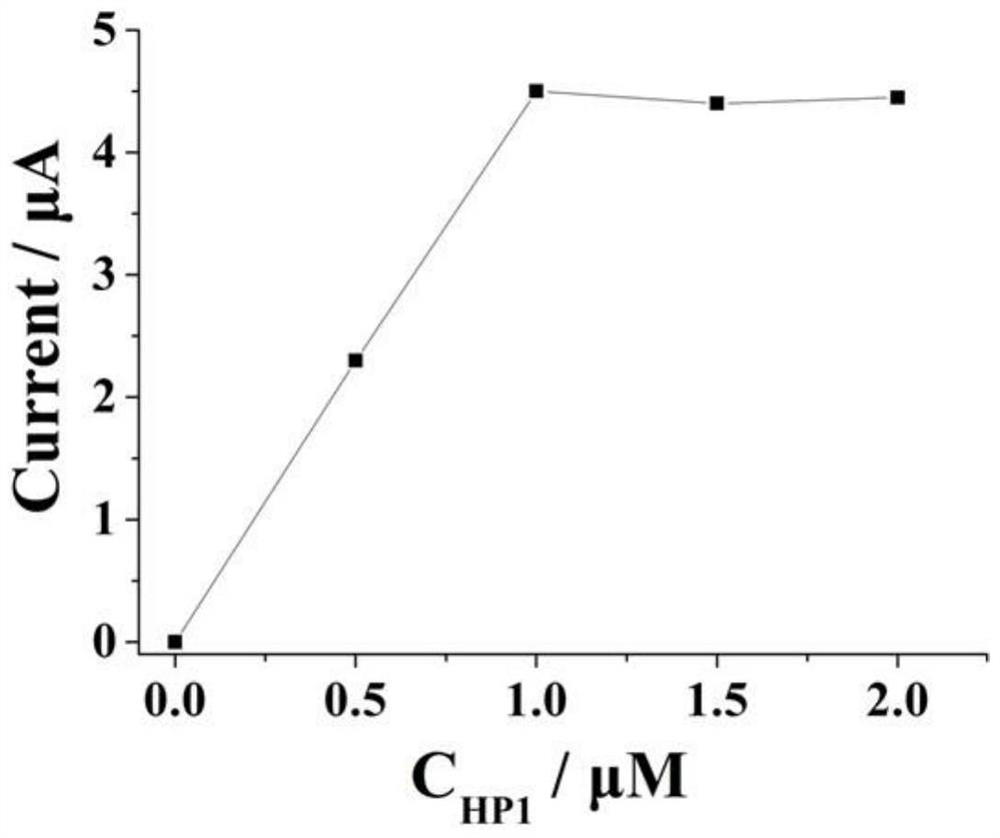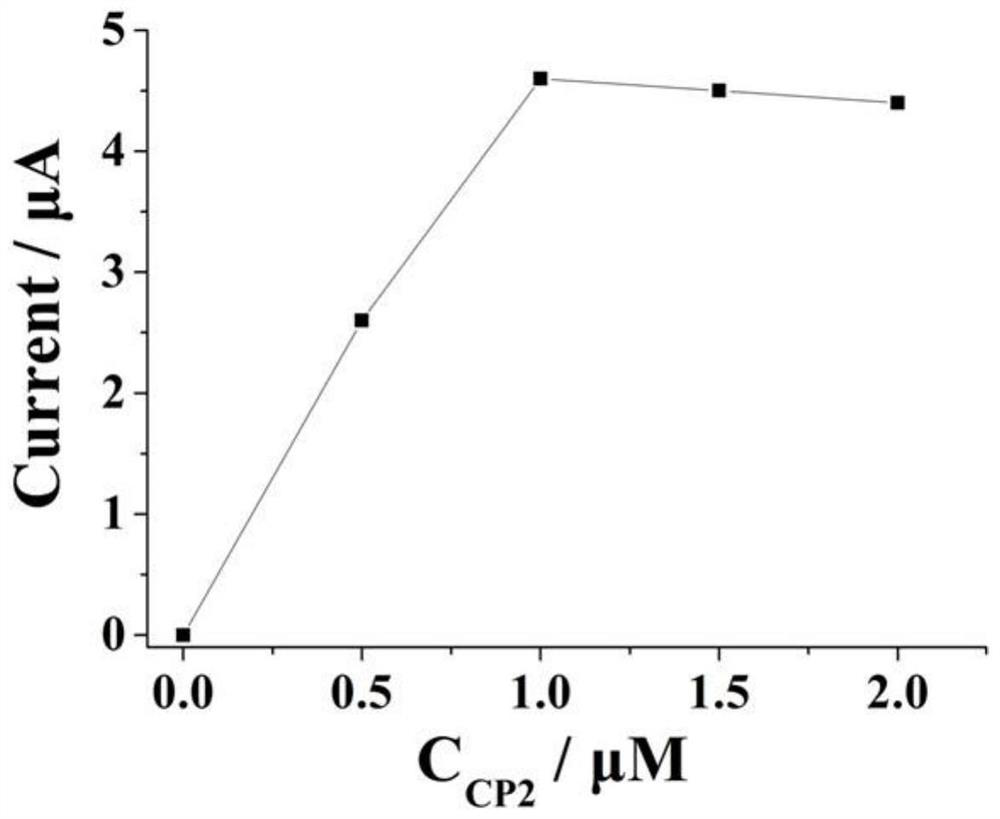An electrochemical sensor for detecting lead ions and its preparation method
A lead ion and electrochemical technology is applied in the field of electrochemical sensors for detecting lead ions and their preparation, which can solve the problems of low specificity and sensitivity and high cost
- Summary
- Abstract
- Description
- Claims
- Application Information
AI Technical Summary
Problems solved by technology
Method used
Image
Examples
Embodiment 1
[0059] A preparation method of the electrochemical biosensor of the present invention:
[0060] a. The gold electrode is first polished in 0.3 and 0.05 µm alumina slurry until it becomes a mirror surface, and then rinsed repeatedly with PBS and secondary water;
[0061] b. Add 10 μL of 1 μM CP2 dropwise to the surface of the electrode through the Au-S bond, incubate at room temperature for 2 h, and wash.
[0062] So far, the modification process of the electrode has come to an end. The following describes the reaction in the homogeneous solution and the main steps in the homogeneous reaction:
[0063] a. Mix 1X PBS buffer, (0 μM, 0.5 μM, 1 μM, 1.5 μM, 2 μM) HP1, 1 μM HP2, 1 μM HP3, 3 μM SP-AuNP (1 nM), 1 μM DP and the target to be tested Add 2 μL of each substance and 6 μL of sterilized water into the centrifuge tube, shake for 30 s, and incubate in a 37 °C incubator for 2 h;
[0064] b. Add the solution (10 μL) after the reaction in step a dropwise onto the pre-modified CP2...
Embodiment 2
[0071] A preparation method of the electrochemical biosensor of the present invention:
[0072] a. The gold electrode is first polished in 0.3 and 0.05 µm alumina slurry until it becomes a mirror surface, and then rinsed repeatedly with PBS and secondary water;
[0073] b. Add 10 μL (0 μM, 0.5 μM, 1 μM, 1.5 μM, 2 μM) of CP2 dropwise onto the electrode surface and incubate at room temperature for 2 h. Fix the CP2 chain to the electrode surface through the Au-S bond and wash;
[0074] So far, the modification process of the electrode has come to an end. The following describes the reaction in the homogeneous solution and the main steps in the homogeneous reaction:
[0075] a. Add 1X PBS buffer, 1 μM HP1, 1 μM HP2, 1 μM HP3, 3 μM SP-AuNP (1 nM), 1 μM DP and 2 μL of the target to be tested, and 6 μL of sterilized water into the centrifuge tube , shaken for 30 s, and incubated in a 37 ℃ incubator for 2 h;
[0076] b. Add the solution (10 μL) after the reaction in step a dropwise...
Embodiment 3
[0083] A preparation method of the electrochemical biosensor of the present invention:
[0084] a. The gold electrode is first polished in 0.3 and 0.05 µm alumina slurry until it becomes a mirror surface, and then rinsed repeatedly with PBS and secondary water;
[0085] b. Add 10 μL of 1 μM CP2 dropwise to the electrode surface and incubate at room temperature for 2 h. Fix the CP2 chain to the electrode surface through the Au-S bond and wash;
[0086] So far, the modification process of the electrode has come to an end. The following describes the reaction in the homogeneous solution and the main steps in the homogeneous reaction:
[0087] a. Mix 1X PBS buffer, 1 μM HP1, 1 μM HP2, 1 μM HP3, (1.2 μM, 2.1 μM, 3 μM, 3.9 μM, 4.8 μM) SP-AuNP (0.4 nM, 0.7 nM, 1 nM, 1.3 nM, 1.6 nM), 1 μM DP and 2 μL of the target to be tested, and 6 μL of sterilized water were added to the centrifuge tube, shaken for 30 s, and incubated in a 37 °C incubator for 2 h; Each concentration corresponds ...
PUM
 Login to View More
Login to View More Abstract
Description
Claims
Application Information
 Login to View More
Login to View More - R&D
- Intellectual Property
- Life Sciences
- Materials
- Tech Scout
- Unparalleled Data Quality
- Higher Quality Content
- 60% Fewer Hallucinations
Browse by: Latest US Patents, China's latest patents, Technical Efficacy Thesaurus, Application Domain, Technology Topic, Popular Technical Reports.
© 2025 PatSnap. All rights reserved.Legal|Privacy policy|Modern Slavery Act Transparency Statement|Sitemap|About US| Contact US: help@patsnap.com



